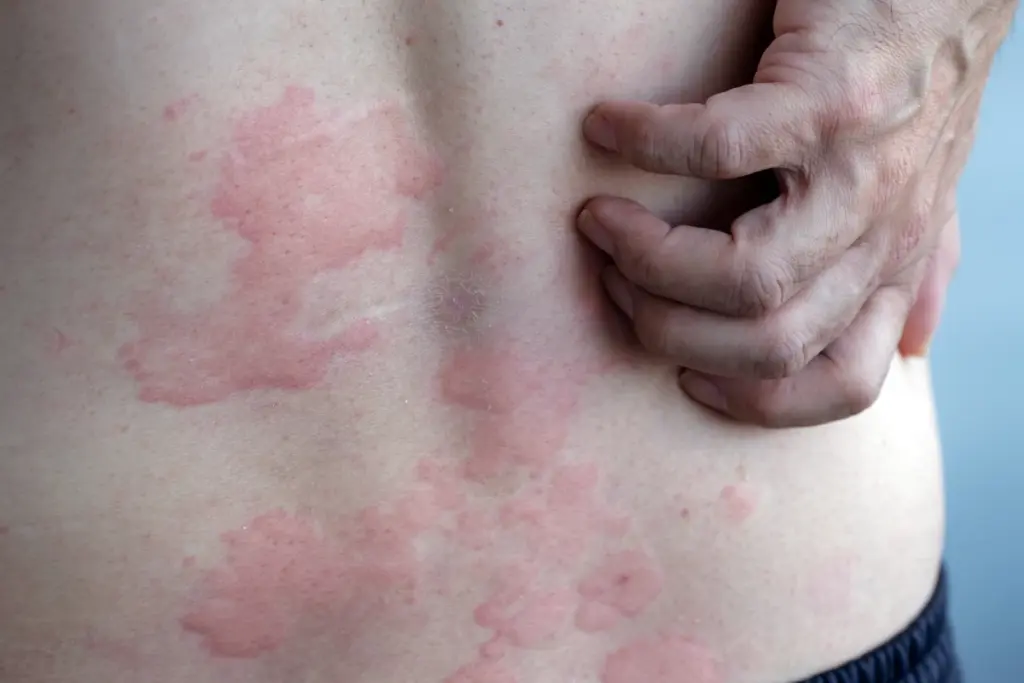
A significant global study has identified the most effective and safest treatments for chronic hives, particularly when traditional antihistamines are ineffective. Conducted by researchers at McMaster University in Canada, this comprehensive analysis offers a valuable resource for both patients and clinicians navigating treatment options.
Chronic hives, or urticaria, is characterized by persistent redness, swelling, and intense itchiness. When these symptoms last for six weeks or longer, the condition is classified as chronic. Standard first-line treatments typically involve antihistamines, but when these fail, systemic therapies that operate throughout the body may be necessary.
The study, which analyzed data from 93 studies involving 11,398 participants, focused on adolescents and adults experiencing moderate to severe symptoms of chronic urticaria. Only randomized controlled trials that examined systemic treatments were included; trials assessing antihistamines, steroids, and alternative medicines were excluded.
Key Findings on Treatment Options
Using a systematic review and Bayesian network meta-analysis (BNMA), researchers evaluated the safety and efficacy of various drugs and immunotherapies. They concentrated particularly on outcomes significant to patients, such as the severity of itch and wheals, angioedema, quality of life, and treatment-related side effects. Each study was scrutinized for quality and bias, with evidence rated as high, moderate, low, or very low based on the GRADE approach.
The findings highlighted omalizumab (Xolair), administered at a dosage of 300 mg every four weeks, and remibrutinib as the most effective treatments. Omalizumab is a monoclonal antibody that blocks the action of immunoglobulin E (IgE), a key player in allergic reactions and inflammation. On the other hand, remibrutinib is an oral medication that inhibits Bruton’s tyrosine kinase (BTK), disrupting a pathway critical to the release of histamine and other inflammatory mediators responsible for chronic urticaria symptoms. Though not yet commercially available, remibrutinib has shown promising results in Phase 3 clinical trials, suggesting it may soon become an important treatment option.
Another noteworthy treatment identified is dupilumab (Dupixent), which blocks two proteins in the immune system that contribute to inflammation. While it may effectively reduce itch and wheal severity, its overall impact on swelling and quality of life remains uncertain due to insufficient data.
The study also explored cyclosporine, an immunosuppressive medication designed to dampen the immune response. While it may be effective in reducing itch and wheals, it is associated with higher rates of adverse effects, including kidney toxicity and elevated blood pressure.
Limitations and Future Directions
Despite its comprehensiveness, the study has limitations. Many of the trials were short-term, making it challenging to assess the long-term safety of some drugs. Furthermore, older, less expensive medications like sulfasalazine, azathioprine, and methotrexate were found to have low or very low certainty of evidence ranking, primarily due to small or non-randomized studies.
Children were notably underrepresented in the research, with only one trial including participants under the age of 12, which limits guidance for pediatric chronic urticaria. Additionally, there is a lack of quality data comparing high-dose omalizumab with other treatments. The absence of randomized controlled trials testing combinations of treatments is another gap, especially given their potential use in real-world practice.
Nevertheless, this study represents the most comprehensive evidence-based comparison of systemic treatments for chronic urticaria to date. Patients now have a clearer hierarchy of options beyond antihistamines, allowing for more personalized treatment plans. Factors such as cost, needle phobia, and convenience will also play crucial roles in treatment decisions.
The research received funding from the American Academy of Allergy, Asthma and Immunology (AAAAI) and the American College of Allergy, Asthma and Immunology (ACAAI). The full findings were published in the Journal of Allergy and Clinical Immunology in March 2024, paving the way for improved management of chronic hives and enhanced quality of life for those affected.






